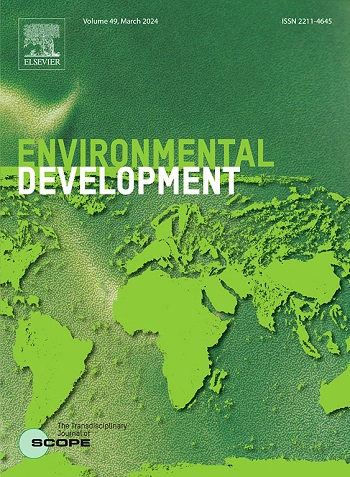结合无人机图像和实地数据,评估厄瓜多尔西部农林业生物多样性的地理和社会驱动因素
IF 5.3
2区 环境科学与生态学
Q2 ENVIRONMENTAL SCIENCES
引用次数: 0
摘要
为获取农产品而迅速砍伐森林继续威胁着热带森林,而热带森林拥有无与伦比的生物多样性,并提供必要的碳封存。农林业通过将树木纳入农业景观,为森林损失提供了一种恢复性解决方案,使农民能够从树木产品中获利,同时保持生态系统的健康。尽管农林业有好处,但小农广泛采用农林业往往受到高昂建立成本的阻碍。生态系统服务付费(PES)计划为支持农林复合发展提供了一个有希望的机会,但有限的监测策略限制了扩大恢复规模和评估影响农场生物多样性因素的努力。由于农业准入受限、地形危险、缺乏时间和资金限制,促进农业景观生物多样性的组织在评估多样性方面面临挑战。我们与一个资助厄瓜多尔高度退化的太平洋森林采用农林业的当地组织合作,在当地植物学专家的帮助下,获得了高分辨率RGB无人机图像和实地数据,以识别无人机图像中的单个树木。然后,我们计算了农场层面的多样性指标,以分析它们与该地区30个农场的社会和地理特征之间的关系。结果表明,海拔高度是影响树种丰富度的主要因素,对农场规模、农场海拔范围和农场管理员性别的影响较小。了解环境因素与农场树木多样性变化之间的关系,可以为农民提供有针对性的援助,并提高社区主导的恢复这些关键森林生态系统的努力的有效性。本文章由计算机程序翻译,如有差异,请以英文原文为准。
Incorporating drone imagery and field-data to assess geographic and social drivers of agroforestry biodiversity in western Ecuador
Rapid deforestation for agricultural commodities continues to threaten tropical forests, which harbor unparalleled biodiversity and provide essential carbon sequestration. Agroforestry offers a restorative solution to forest loss by integrating trees into agricultural landscapes, allowing farmers to profit from tree products while maintaining ecosystem health. Despite its benefits, the widespread adoption of agroforestry by smallholder farmers is often hindered by high establishment costs. Payment for Ecosystem Service (PES) programs present a promising opportunity to support agroforestry expansion, yet limited monitoring strategies constrain efforts to scale up restoration and evaluate factors influencing farm biodiversity. Organizations promoting biodiverse agricultural landscapes face challenges in assessing diversity due to restricted farm access, dangerous terrain, lack of time, and financial constraints. In collaboration with a local organization funding agroforestry adoption in Ecuador's highly degraded Pacific Forest, we acquired high-resolution RGB drone imagery and field data with help from local botanical experts to identify individual trees in drone imagery. We then calculated farm-level diversity metrics in order to analyze their relationships with social and geographic characteristics of 30 farms in the region. Results indicated that elevation was the main factor driving tree species richness, with little effect of farm size, farm range of elevation, or farm steward gender. Understanding how environmental factors relate to variation in tree diversity across farms can inform targeted assistance for farmers and enhance the effectiveness of community-led efforts to restore these critical forest ecosystems.
求助全文
通过发布文献求助,成功后即可免费获取论文全文。
去求助
来源期刊

Environmental Development
Social Sciences-Geography, Planning and Development
CiteScore
8.40
自引率
1.90%
发文量
62
审稿时长
74 days
期刊介绍:
Environmental Development provides a future oriented, pro-active, authoritative source of information and learning for researchers, postgraduate students, policymakers, and managers, and bridges the gap between fundamental research and the application in management and policy practices. It stimulates the exchange and coupling of traditional scientific knowledge on the environment, with the experiential knowledge among decision makers and other stakeholders and also connects natural sciences and social and behavioral sciences. Environmental Development includes and promotes scientific work from the non-western world, and also strengthens the collaboration between the developed and developing world. Further it links environmental research to broader issues of economic and social-cultural developments, and is intended to shorten the delays between research and publication, while ensuring thorough peer review. Environmental Development also creates a forum for transnational communication, discussion and global action.
Environmental Development is open to a broad range of disciplines and authors. The journal welcomes, in particular, contributions from a younger generation of researchers, and papers expanding the frontiers of environmental sciences, pointing at new directions and innovative answers.
All submissions to Environmental Development are reviewed using the general criteria of quality, originality, precision, importance of topic and insights, clarity of exposition, which are in keeping with the journal''s aims and scope.
 求助内容:
求助内容: 应助结果提醒方式:
应助结果提醒方式:


